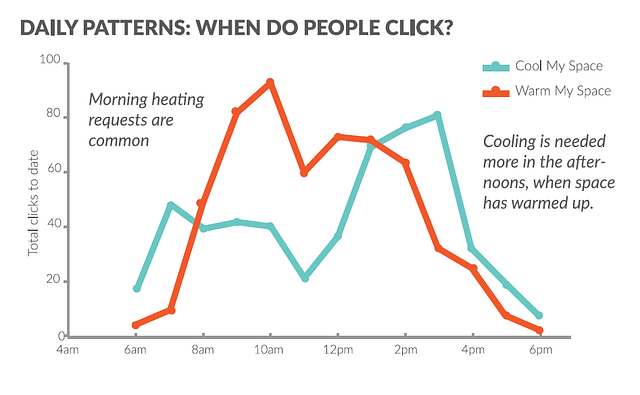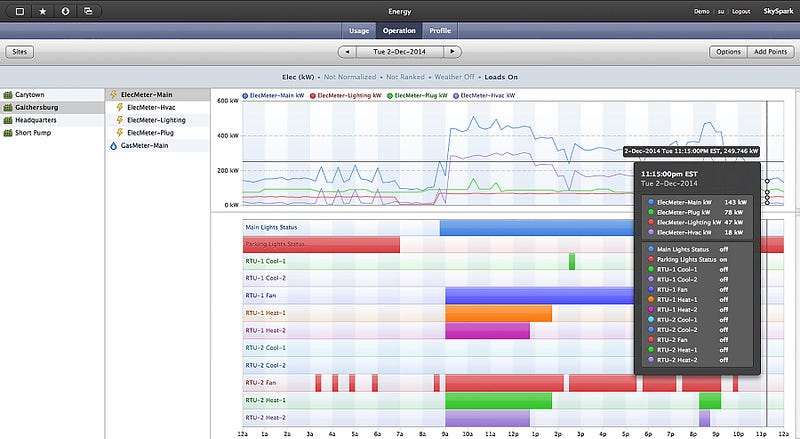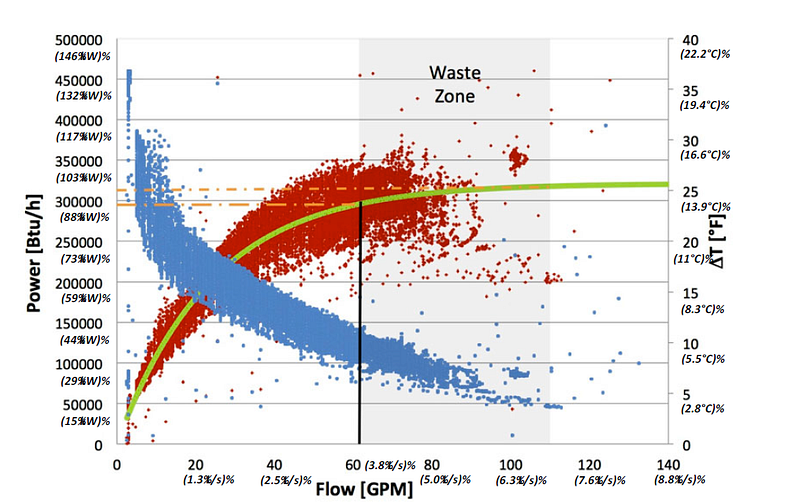The 3 Biggest Opportunities for IoT Innovation in Smart Buildings
The 3 Biggest Opportunities for IoT Innovation in Smart Buildings
- Last Updated: December 2, 2024
Matt Ernst
- Last Updated: December 2, 2024



The first step to any IoT project is having in-depth knowledge and understanding of the problem that needs to be solved. The biggest opportunities in the Smart Building market have existed for a long time. Most of them have been considered unsolvable.
IoT and Analytics for Smart Buildings has changed the dynamic, and facility managers are beginning to believe a new higher quality of care for buildings is possible with the application of new technology. There are 3 major areas where IoT tech can be applied to solve existing pain points for facility managers.
1. Buildings Are Not Comfortable
[caption id=" align="aligncenter" width="640"]

In a 2009 study, the GSA found that 61% of occupants in their buildings were uncomfortably cold in the summer. Not only does this waste an enormous amount on energy, it defeats the point of air conditioning, which is to make people comfortable. The heating and A/C industry’s standard for occupant comfort (ASHRAE standard 55) predicts that if all the design requirements prescribed are met, then at least 80% of occupants will be satisfied with their thermal environment.
First of all, for a $1T industry with nearly 100 years of design, construction, and maintenance experience, why should we settle for a 20% failure rate? Buildings today, built for best-case-scenario, have 1 out of 5 people constantly uncomfortable.
More importantly, virtually all buildings in the US don’t meet this standard and are much less comfortable. The HVAC industry needs to be disrupted. The user experience of being in a building is bad. Or perhaps, it’s non-existent. Occupants have little to no say in how comfortable they get to be. Maybe you have a chance at getting a hold of the maintenance staff and having your voice heard.
[caption id=" align="aligncenter" width="623"]

New IoT solutions are slowly emerging to solve this age old problem. The Comfy App is a hardware+software+app solution that allows the building occupants to change the thermostat from their phone. It also has a great back-end data feature that is helpful to provide a better insight to building operators on how the occupants of their building are feeling in real-time.
[caption id=" align="aligncenter" width="640"]

2. Building Systems Break Faster Than We Can Fix Them
Another reason why so many people are uncomfortable is no one’s fault. The mechanical systems in buildings break over time. Most buildings are old and stuff just degrades and breaks. Mechanical systems in buildings are designed for 20–30 year lifetimes, but typically they are only replaced once they fail.
About half of all buildings in the U.S. were constructed from 1970–2000. This means that a wave of mechanical and electrical systems in buildings are passing their useful life expectancy and will break at an increasing pace.
Getting ahead of the curve and fixing problems before they become bigger issues is the goal of the facility management industry. However, most building operators are bogged down in an endless cycle of chasing problem after problem.
One way to get ahead is to collect and apply analytics to the data coming from mechanical and electrical equipment in buildings. The IoT in smart buildings is going to be heavily reliant on analytics. Facility managers of the future will need to become fluent in the ways of identifying issues in their buildings, not by traditional methods (occupants calling and complaining, noticing equipment failing, in-person preventative maintenance and inspections) but by using algorithms to sort through vast amounts of data and identify patterns that provide useful insights.
There are many analytics software packages that can be applied to buildings today. One of the leading ones is SkySpark. It has many functions, however its main purpose is to run custom functions or “rules” against the data collected in a building and identify operational problems that are non-obvious (such as dampers stuck in position or valves leaking).
[caption id=" align="aligncenter" width="800"]

There is no hardware/software that can actually fix these problems once you find them. That is still far off in the future. Also somewhat not-to-far off in the future is the ability to use AI, instead of writing custom programming, to identify insights in operational data. There is no mainstream, commercial application of AI for building systems that I am currently aware of.
3. Buildings Use Too Much Energy
The true irony of the buildings we live and work in is that buildings destroy the environment outside the building, while preserving the environment on the inside. Buildings account for 40% of U.S. GHG emissions and the vast majority can significantly improve their energy efficiency. A lot of progress has been made on this front since the 1970s, however there is a long way to go.
Reducing energy in buildings is complicated due to the high variation in building design. Reducing energy of any building requires a custom approach and a custom skill set of the person setting out to complete the work. Analytics will also play a large role in optimizing energy use in buildings, however I’d like to highlight another IoT application.
The parts of pieces of mechanical systems are beginning to be designed with more connectivity and better features. For example, Belimo is a company that has made valves and actuators for a long time. They recently announced their new “energy valve” that has a built in web server.
[caption id=" align="aligncenter" width="640"]

Previously, the only data available to a building operator from a valve would be the percentage to which it is commanded open and other temperature or pressure data from separate sensors, which would be gathered at infrequent intervals.
Now, data from over 50 points on the valve’s on board control system alone can be continuously monitored and sent to the cloud for analytics. Shown below is a graph of data that can be used to determine if the valve, and coil it serves, is using energy most efficiently.
[caption id=" align="aligncenter" width="800"]

The biggest opportunities in the Smart Building market have existed for a long time. IoT and Analytics for Smart Buildings has created opportunities for more efficient and more profitable operation of a building in ways that have never been possible before.
The Most Comprehensive IoT Newsletter for Enterprises
Showcasing the highest-quality content, resources, news, and insights from the world of the Internet of Things. Subscribe to remain informed and up-to-date.
New Podcast Episode

IoT and AI in 2026
Related Articles





